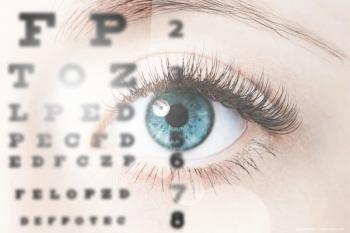
Optical coherence tomography, stereoscopic fundus photo correlation observed in clinical study
A moderate correlation has been found between optical coherence tomography and fundus photo measurements as well as between those measures and visual acuity in the assessment of diabetic macular edema.
Key Points
Baltimore-A moderate correlation has been observed between optical coherence tomography (OCT) and stereoscopic fundus photography as anatomic measures to assess diabetic macular edema (DME), particularly for groups as compared with individuals. A correlation also was seen between both of these measures and visual acuity, although it was slightly less.
"OCT as the principal method for documenting retinal thickness as well as change in retinal thickness is supported for future clinical trials by these data," said Susan B. Bressler, MD, the Julia G. Levy, PhD, Professor of Ophthalmology, Department of Ophthalmology, Johns Hopkins University School of Medicine, Baltimore. She reported findings of a recent study on behalf of the Diabetic Retinopathy Clinical Research Network.
"OCT and photographs provide complementary information, and the decision of whether to use either, both, or neither in subsequent studies really depends on the question you wish to address," Dr. Bressler said. "Neither modality is a reliable substitute for visual acuity."
Stereoscopic color fundus photographs long have been the gold standard for documenting both the presence and severity of DME within clinical trials. OCT, however, provides an alternative modality for accomplishing the same objective and in addition provides quantitative estimates of retinal thickness, she said.
This study was designed to compare time-domain OCT and stereoscopic color fundus photograph assessment of retinal thickening directly and to compare each of these imaging modalities with visual acuity in eyes with DME participating in a multicenter clinical trial.
OCT images-largely from a proprietary OCT system (Stratus, Carl Zeiss Meditec)-as well as film-based color photographs and best-corrected visual acuity were obtained in both eyes of 263 participants in a trial comparing two laser techniques for DME.
The primary variables of interest, both at baseline and at the 12-month visit, were the central subfield thickness (CST) generated by the OCT macular map and a reading center-derived DME scale on a seven-step grading. The scale incorporated the area of retinal thickening within 1 disk diameter of the foveal center and the degree of thickening at the center itself. Photos and OCT images were evaluated independent of one another.
"The OCT variables were identified within the macular 6-mm scan grid and the photographic assessment within a grid of a similar configuration that occupies a larger area on the retina such that thickening can be present in an outer subfield on the photo and absent on the OCT," Dr. Bressler said.
At baseline, the mean acuity of the subjects was 20/32, median CST was 273 μm, and severity grades for the fundus photographs were widely distributed (37% in level 1, 22% in levels 2 or 3, and 41% in levels 4 or 5).
Photographic assessment
Describing the findings of the study, Dr. Bressler noted that a correlation was found between OCT CST and the grade on the photographic assessment. The mean CST increased from about 240 μm to a high of 520 μm with progressive stepwise increases on the photographic assessment, producing a correlation of 0.67. Investigators also observed, however, that the interquartile ranges were quite broad, creating significant overlap between the categories, and many outliers were seen.
When the same analysis was performed on the 12-month data, a correlation of a slightly lesser magnitude was found (r = 0.57 for OCT and r = 0.47 for the photographic scale). As before, a broad interquartile range, much overlap between categories, and many outliers existed.
Looking at change from baseline to 1 year as measured by OCT and estimated on the photographic scale, the correlation was of similar strength to the comparison at 12 months (r = 0.52), Dr. Bressler said.
In a group of 45 patients who had a 3-step or greater improvement on the photographic assessment, 80% had a substantial decrease in retinal thickness of >40 μm. The correlation, however, was less robust at other photographic levels. For example, nearly half of the 76 individuals who had no change on the photographic assessment had a substantial reduction in retinal thickness on the OCT; another 10% had a substantial gain in retinal thickness.
"It appears that the photographic assessment is less sensitive to change over time than that we see for OCT," Dr. Bressler said.
She also described the correlations of either OCT or fundus photographic assessment with visual acuity. At baseline, the magnitude of the correlation was similar for either modality with visual acuity, but it was lower than the correlation between either image modality with the other.
At 12 months, the correlation between OCT and vision was similar, but it was less robust for photographic assessment.
Newsletter
Don’t miss out—get Ophthalmology Times updates on the latest clinical advancements and expert interviews, straight to your inbox.















































.png)


